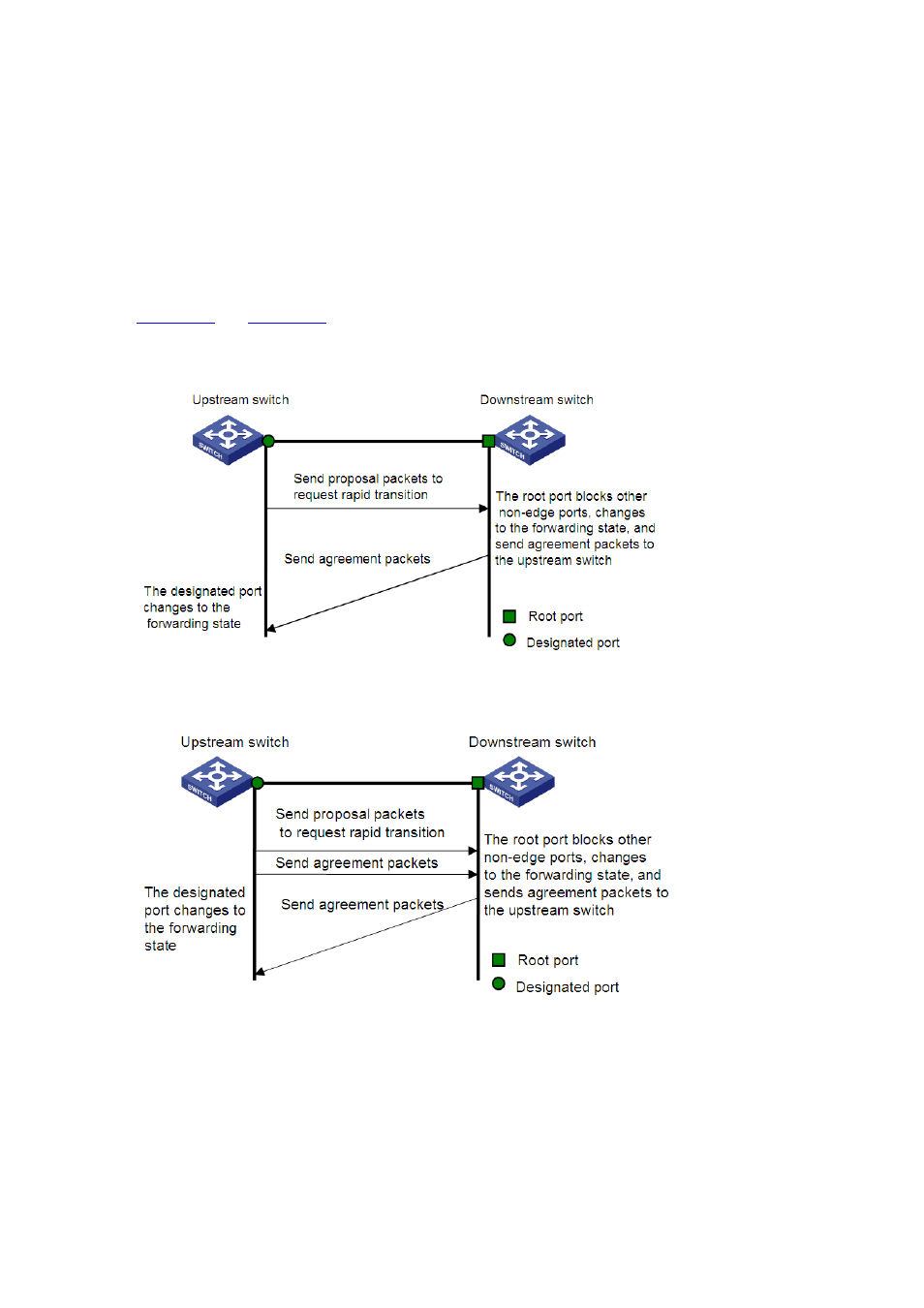H3C Technologies H3C WX3000 Series Unified Switches User Manual
Page 209

22-40
z
Agreement packets: Packets used to acknowledge rapid transition requests
Both RSTP and MSTP specify that the upstream device can perform rapid transition operation on the
designated port only when the port receives an agreement packet from the downstream device. The
difference between RSTP and MSTP are:
z
For MSTP, the upstream device sends agreement packets to the downstream device; and the
downstream device sends agreement packets to the upstream device only after it receives
agreement packets from the upstream device.
z
For RSTP, the upstream device does not send agreement packets to the downstream device.
and
illustrate the rapid transition mechanisms on designated ports in RSTP and
MSTP.
Figure 22-6
The RSTP rapid transition mechanism
Figure 22-7
The MSTP rapid transition mechanism
The cooperation between MSTP and RSTP is limited in the process of rapid transition. For example,
when the upstream device adopts RSTP, the downstream device adopts MSTP and the downstream
device does not support RSTP-compatible mode, the root port on the downstream device receives no
agreement packet from the upstream device and thus sends no agreement packets to the upstream
device. As a result, the designated port of the upstream device fails to transit rapidly and can only turn to
the forwarding state after a period twice the forward delay.